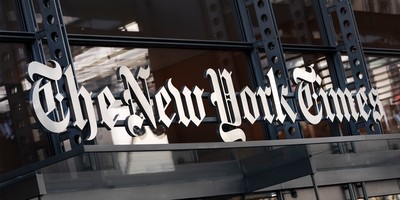With President-elect Donald Trump having won just over three weeks ago now, there's been a slew of post-election polls out on how Americans feel about such an election, Trump, and the country at whole, as Townhall has been covering. With Trump set to return to the White House in less than two months, Americans are hopeful for a return to normalcy. They certainly have reason to be, especially compared to the chaos that came with being subjected to the Biden-Harris administration for the past four years. Fortunately, Americans also dodged a bullet by electing Trump over choosing to promote Vice President Kamala Harris.
Among the polls released this week included one from Gallup, "Postelection: Economic Confidence Up; Biden Ratings Down."
When it comes to that headline on the economy, the Economic Confidence Index for November is at -17, while it was at -26 in October, an improvement of +9. "The current reading is the best since a -12 reading in August 2021, when the economy continued to improve from the initial shocks of the COVID-19 pandemic. In reaction to rising inflation in late 2021 and early 2022, the index subsequently fell as low as -58 by June 2022, which was the worst reading since the Great Recession of 2007-2009," Gallup noted.
For November, 36 percent believe the economy is getting better, while 32 percent said so in October. Fifty-five believe the economy is getting worse, while that number was at 62 percent in October.
Not surprisingly, the improvement is driven by Republicans. As the write-up noted, speaking about a partisan breakdown of the Economic Confidence Index:
Recommended
Higher economic confidence is being driven primarily by Republicans, whose index score gained 29 points to -43 this month. Independents’ confidence went up nine points, to -25, while Democrats’ dropped 10 points, to +27.
These shifts are largely a function of changes in partisans’ perceptions about the outlook for the economy, likely a reaction to Trump’s election as president. Many more Republicans now view the economy as getting better, and many fewer say it is getting worse. In contrast, fewer Democrats see the economy as improving, and more see it worsening.
Another finding along partisan breakdowns is that 5 percent of Republicans thought the economy was "excellent/good" in October, and now 7 percent do. Twenty-seven percent thought it was "only fair," while now 32 percent of Republicans do. Also, fewer Republicans think the economy is "poor" than they did in October, at 61 percent compared to 68 percent.
"Republicans’ views about national conditions are likely to become increasingly positive in the coming months, while Democrats’ opinions will likely sour. Once Trump and the Republican Congress are installed in their offices in early 2025, Republicans’ assessments of the economy, state of the nation and federal leaders are expected to surpass those of Democrats," Gallup also noted as part of their lasting thoughts.
Previous Gallup polls leading up to the election, which the Trump campaign certainly picked up on, and as we covered at the time, showed a particular distrust for President Joe Biden's handling of the economy. Polls and approval ratings overall have shown that Biden had particularly poor numbers for his handling of the economy and inflation.
As other polls have shown, not only is there good news for Republicans, but also bad news for Democrats. Just 37 percent approve of Biden's job as president, which the poll notes is "just one point above his personal low registered in July, shortly before he dropped out of the presidential election race." Biden had a 41 percent approval rating going into the election.
Biden's numbers were at record low in a poll from Emerson College, also released this week, as we covered at the time.
Gallup also looked to the approval rating of lame duck presidents, going back to Harry S. Truman from 1952. The only other president who had a larger negative change in preelection/postelection approval ratings was President Jimmy Carter, who lost in 1980 to Ronald Reagan. He went from a 37 percent approval rating to a 31 percent approval rating.
A post from Gallup shared over X earlier this week also highlights how the Republican Party's favorable rating is still at 44 percent. For Democrats, however, that number from down from 43 percent in October to 38 percent in November, giving Republican an even wider lead in that regard.
Americans' favorable rating of the Republican Party is unchanged at 44% post-election, while Americans’ favorable rating of the Democratic Party has edged down five points to 38% since Gallup’s final preelection reading in October.
— Gallup (@Gallup) November 26, 2024
Full story: https://t.co/VwJeL07sL1 pic.twitter.com/X2hAucE1nF
The poll was conducted November 6-20, with 1,001 adults living in the United States. There was a margin of error of plus or minus 4 percentage points.
It's worth proceeding with caution, as the Republican Party has had a habit of screwing up being in the majority, and also seems to do better when they're actually in the minority. But, not only did the GOP take back control of the Senate, they also are keeping control of the House. While their majority will be particularly narrow, they still have an opportunity presented to them, thanks to unified government. Conservatives also have a 6-3 majority on the U.S. Supreme Court, with Trump having nominated three of those six conservative justices.
The midterms tend to be tricky for the president's party, but the Democrats can't seem to have gotten themselves out of their disarray. 2026 may seem far away, and 2028 even farther away, but Democrats can't seem to get their act together, remaining in disarray and even doubling down on it following their massive losses earlier this month. Trump and the Republican Party, as our own Kurt Schlichter highlighted following the election, have a real chance here to keep on winning for 2026 and 2028.

























